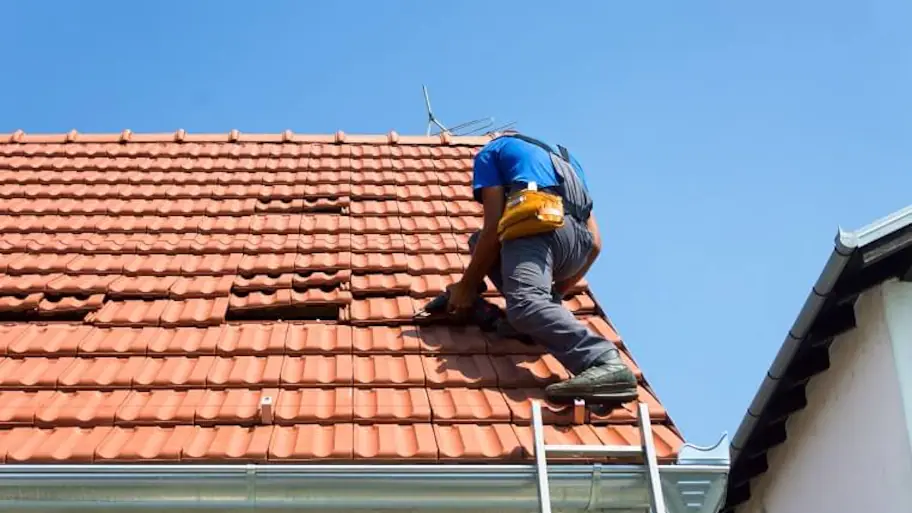Your commercial building’s longevity and structural integrity depend on its roof maintenance. A well-kept roof guarantees occupant safety protects your property, and, over time, can save you significant repair expenses. Still, roof care is sometimes disregarded until issues develop, resulting in costly repairs and maybe business interruption.
Frequent maintenance might enable you to spot and fix minor problems before they become more serious. This post offers five basic maintenance ideas to keep your commercial roof in perfect shape. These tips will help increase your roof’s lifespan and keep your construction safe and secure for years.
1. Regular Inspections
Good roof maintenance mostly depends on regular inspections. At least two annual inspections—ideally in the spring and fall—help you find issues early on. Look for obvious damage on an inspection, like loose flashing, missing shingles, or cracks. Consider common leak sites around vents, skylights, and chimneys.
Examining your building’s interior for water damage indicators—such as wall or ceiling stains—may also hint at roof problems. One brilliant idea is to have a professional roofing contractor do a comprehensive check. Their experience helps them to identify issues that would be overlooked during a casual check. You can search on Google for “commercial roof repair near me” to get a professional.
Further, documenting each inspection with notes and photos can help track the roof’s condition as time passes. This information benefits future maintenance planning and warranty claims.
2. Clean Gutters and Drains
Maintaining clean gutters and drains is crucial for preventing water damage to your commercial roof. Water backed up from clogged gutters may infiltrate under the roofing material and cause structural damage and leaks. Regularly remove leaves, trash, and other obstacles, especially in the fall when leaves abound.
Remove larger debris with a scoop or by hand to clean gutters and drains. Then, use a hose to clear any last bits of dirt and ensure water runs naturally through the system. Gutter guards simplify upkeep by helping to limit the amount of trash entering the gutters.
Also, check the downspouts often to ensure they direct water away from the building’s foundation and are not clogged. Water gathering around the foundation can cause major structural problems over time if you don’t.
3. Address Leaks Promptly
Ignoring even little leaks can seriously compromise the interior of your building and your commercial roof. Thus, take quick care of a leak as soon as it is found. Leaks can lead to costly repairs for damage to electrical systems, rotting wood, and mold growth.
Examine the roof for damaged shingles, cracks, or locations where the roofing material is weakened to help find the leak source. Sometimes, the cause of a leak could be quite distant from the building’s water intake. Hiring a qualified roofer will enable precise identification and solution of the issue.
Once the cause of the leak has been identified, it should be repaired immediately. This could involve fixing a small area, replacing broken shingles, or sealing skylights and vents. Until there’s a permanent fix, temporary repairs—such as tarps—may help prevent further damage.
4. Maintain Roof Coatings
Protecting your commercial roof from the weather also depends on roof coatings. These coatings protect against UV light, precipitation, and temperature swings. However, roof coatings can deteriorate with time and need reapplication to be efficient.
Check the state of your roof coatings often. Look for wear like blistering, cracking, or peeling. If you observe any of these problems, it is advisable to reapply the coating. Applying fresh layers of paint can help restore the roof’s protective barrier and increase its lifetime.
Several roof coatings are available, including polyurethane, silicone, and acrylic. Each variety has advantages and fits various kinds of roofing materials. See a qualified roofing contractor to guarantee the correct application and help select the suitable coating for your roof.
Good maintenance of roof coatings not only shields your roof but also increases energy efficiency by reflecting sunlight and lowering cooling expenses.
5. Trim Overhanging Trees
Your commercial roof could be in danger from overhanging trees. Branches over the roof can drop trash, including leaves and twigs, which might clog drains and gutters. Branches can also break off and physically harm the roof during storms.
Cutting trees close to your house will often help avoid these problems. Cut branches near or touching the roof to provide enough space between the tree and the building. This lowers damage risk and helps stop rodents from getting on the roof.
Using the correct tools and methods while cutting trees is crucial to prevent damage to your property or the trees. So, if you’re unsure about doing it, get a professional. Employing a qualified tree service guarantees a safe and efficient completion of the work.
Apart from avoiding damage caused by fallen limbs, tree trimming enhances your building’s curb appeal and makes it seem better. It also helps maintain your building’s finest appearance and safeguards your commercial roof. What a basic but powerful approach!
Conclusion
Regular inspections, gutter and drain cleaning, and other tips help extend your commercial roof’s life. Through these proactive steps, you can identify minor problems early on and resolve them before they become more serious. Regular roof maintenance requires time and work. Yet, it will help you secure your structure and prevent unanticipated repair expenditures. Following these basic guidelines will help maintain the outstanding state of your business roof. This guarantees your property’s safety, lifetime, and general integrity for years.










